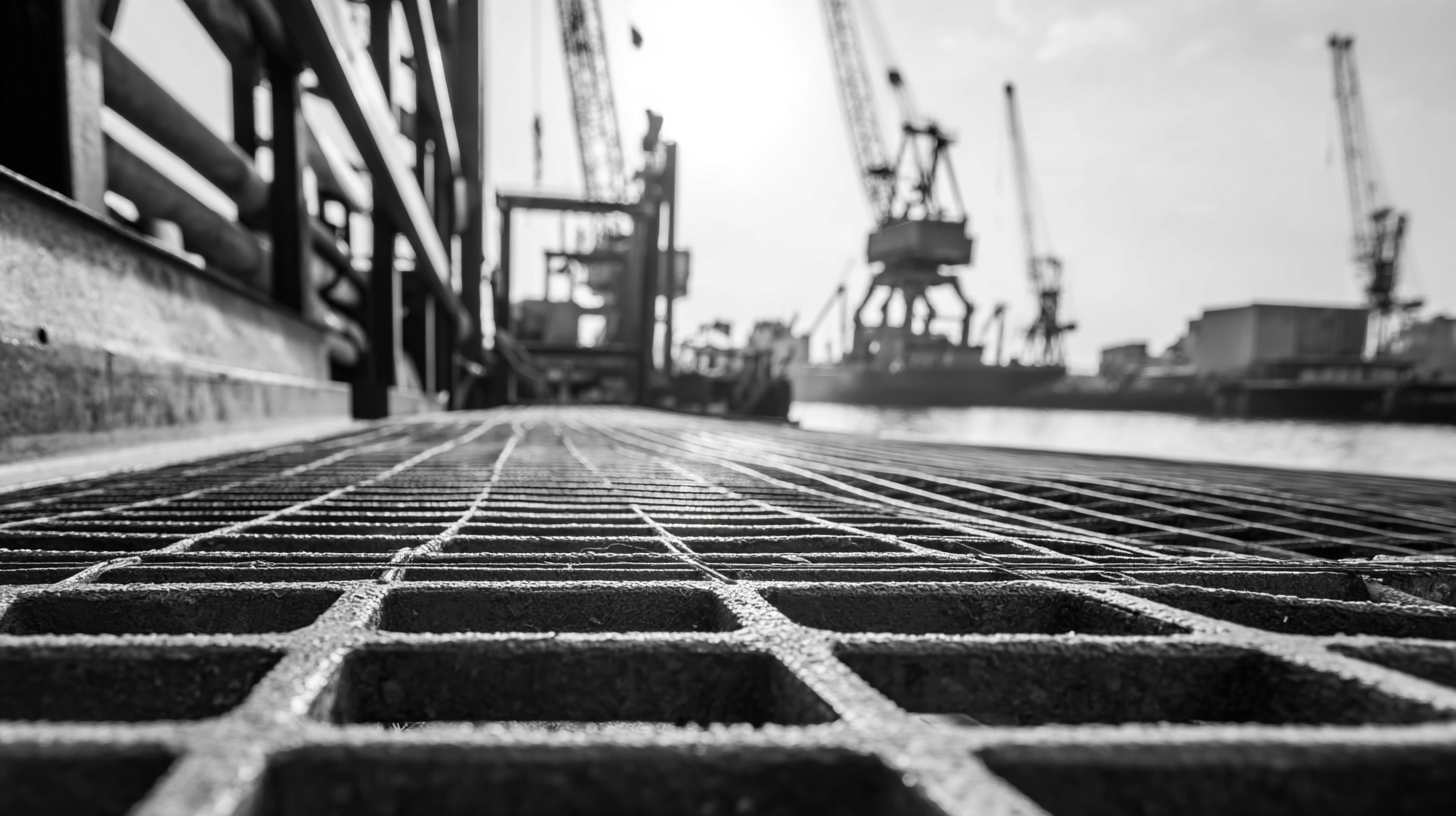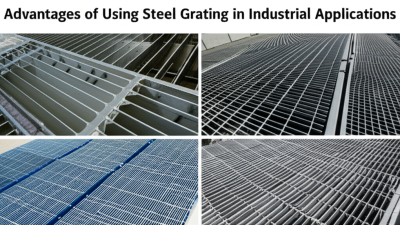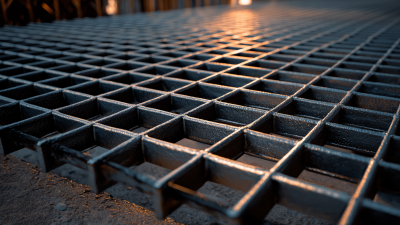 Marine Walking Steel Grating is increasingly recognized as an essential component in coastal construction projects due to its unique blend of durability, safety, and functionality. As coastal environments face the challenges of corrosion and extreme weather conditions, the benefits of using Marine Walking Steel Grating become evident. Its design enhances slip resistance, making it an ideal choice for walkways, bridges, and platforms that must accommodate both pedestrian and vehicular traffic. Furthermore, the open structure of the grating allows for effective water drainage, reducing the risk of flooding and erosion. This innovative material not only supports the structural integrity of coastal infrastructures but also promotes sustainable building practices by minimizing the ecological impact on marine ecosystems. Exploring the benefits of Marine Walking Steel Grating thus reveals its vital role in ensuring the resilience and longevity of coastal construction projects.
Marine Walking Steel Grating is increasingly recognized as an essential component in coastal construction projects due to its unique blend of durability, safety, and functionality. As coastal environments face the challenges of corrosion and extreme weather conditions, the benefits of using Marine Walking Steel Grating become evident. Its design enhances slip resistance, making it an ideal choice for walkways, bridges, and platforms that must accommodate both pedestrian and vehicular traffic. Furthermore, the open structure of the grating allows for effective water drainage, reducing the risk of flooding and erosion. This innovative material not only supports the structural integrity of coastal infrastructures but also promotes sustainable building practices by minimizing the ecological impact on marine ecosystems. Exploring the benefits of Marine Walking Steel Grating thus reveals its vital role in ensuring the resilience and longevity of coastal construction projects.
Marine walking steel grating has become a vital element in coastal construction projects, offering a myriad of advantages specifically tailored for harsh coastal environments. One of the primary benefits is its exceptional durability. According to a report by the American Society of Civil Engineers, steel grating can withstand the corrosive effects of saltwater and the impact of constant tidal changes, significantly extending the lifespan of coastal infrastructure. This longevity not only reduces maintenance costs but also ensures safety and reliability for pedestrian and vehicular traffic.

Another key advantage is the enhanced slip resistance provided by marine walking steel grating. The National Oceanic and Atmospheric Administration highlights that slip-related accidents often increase in coastal areas due to moisture and algae accumulation. The design of steel grating allows for superior drainage, minimizing water pooling and hence reducing slip hazards.
Furthermore, the lightweight nature of steel grating facilitates easier installation and modification, allowing for efficient responses to varying coastal conditions, as detailed in the Coastal Engineering Proceedings. These features make marine walking steel grating an optimal choice for modern coastal construction, merging functionality with safety and longevity.
Marine walking steel grating is becoming a significant choice for coastal construction projects due to its exceptional durability and corrosion resistance. In coastal environments, structures face relentless exposure to saltwater, humidity, and varying temperatures, which can quickly degrade unprotected materials. According to industry reports, galvanized steel grating can last up to 30 years with minimal maintenance in these challenging conditions. This longevity stems from the protective zinc coating that shields the grating from corrosive elements, ensuring that coastal infrastructures remain safe and functional over an extended period.
When selecting materials for coastal projects, consider investing in high-quality galvanized steel grating. Not only does it provide excellent corrosion resistance, but it also supports heavy loads, making it suitable for catwalks and walkways. Tips for ensuring maximum longevity include regular inspections for any signs of wear and corrosion and selecting the appropriate thickness and mesh size for specific applications.
Additionally, marine walking steel grating is designed to provide slip-resistance, crucial for safety in wet environments. The variety of available designs allows for customization to fit aesthetic and functional needs while ensuring that the grating performs well under demanding conditions. Incorporating such materials can enhance the sustainability and safety of coastal constructions, ultimately leading to reduced long-term costs for maintenance and replacement.
Marine walking steel grating has emerged as a cost-effective solution for coastal construction projects, providing numerous advantages over traditional materials. Its design allows for efficient drainage, which is crucial in coastal areas prone to flooding. By facilitating water runoff, it reduces water accumulation on surfaces, thereby minimizing maintenance costs associated with cleaning and repairs. This feature significantly lowers the long-term expenses related to upkeep, making it an attractive option for developers and contractors.
Additionally, marine walking steel grating offers durability and strength that contribute to its cost-effectiveness. Made from corrosion-resistant materials, it withstands the harsh marine environment, reducing the frequency of replacements. Its lightweight nature also means lower transportation costs and easier installation processes. The savings realized in both material and labor expenses underscore the overall economic benefits, making it a preferred choice for projects seeking efficiency without compromising quality. Such advantages allow stakeholders to allocate budgets more effectively while ensuring compliance with safety and environmental standards.

Marine walking steel grating has emerged as a vital component in coastal construction projects, significantly enhancing safety for both workers and infrastructures. This type of grating is designed to withstand harsh marine environments, providing superior slip resistance thanks to its open design and textured surface. The ability to allow water and debris to flow through minimizes the risk of pooling, which can lead to hazardous conditions. As a result, workers can navigate walkways, platforms, and other structures with confidence, reducing the chances of slips and falls.
Furthermore, the installation of marine walking steel grating contributes to the overall durability of coastal construction projects. By resisting corrosion and degradation, this grating supports long-term safety and reliability of coastal facilities. Unlike traditional materials, which may deteriorate rapidly in saltwater conditions, marine walking steel grating maintains its integrity over time. This not only protects the workforce but also reduces maintenance costs and extends the lifespan of structures, ultimately leading to safer construction environments in coastal areas.
Marine walking steel grating offers significant environmental benefits that make it an ideal choice for coastal construction projects. One of the primary advantages is its ability to promote natural water filtration and support marine biodiversity. The open design of the grating allows sunlight to penetrate, facilitating the growth of aquatic plants and fostering habitats for marine organisms. This aspect is crucial in maintaining the ecological balance in coastal areas, where preserving local wildlife is a priority.
Additionally, marine walking steel grating is designed to withstand harsh marine conditions, resulting in lower maintenance and replacement needs over time. This durability minimizes waste generation associated with frequent repairs and replacements, contributing to a more sustainable construction practice. Furthermore, the use of recycled steel in the manufacturing of the grating reduces energy consumption and carbon emissions, aligning with eco-friendly construction goals. By integrating marine walking steel grating into coastal projects, builders not only enhance structural integrity but also reinforce their commitment to environmental stewardship.
| Benefit Type | Description | Environmental Impact | Maintenance Requirements |
|---|---|---|---|
| Durability | Resistant to rust and corrosion, ensuring longevity. | Limits waste generation from replacements. | Low, typically requiring minimal upkeep. |
| Sustainability | Made from recyclable materials, promoting reuse. | Supports circular economy initiatives. | Moderate, with periodic inspection needed. |
| Safety | Provides a slip-resistant surface for pedestrians. | Reduces accidents, lowering injury rates. | None specific, regular cleaning recommended. |
| Cost-Effectiveness | Reduces replacement frequency due to its durability. | Less resource consumption over time, minimal impact. | Infrequent repairs needed. |





